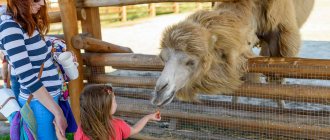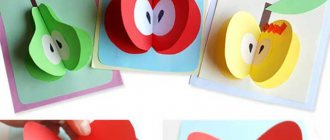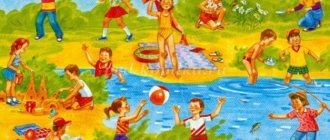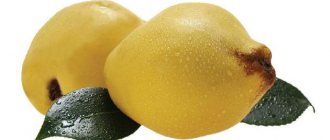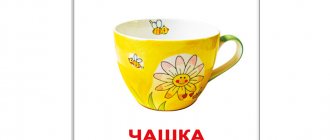What does speech development depend on?
This is influenced by many factors, namely:
- Connecting with parents on an emotional level. Her influence is very great. A child usually speaks well and freely if he feels loved and protected. But given a tough upbringing, built on many prohibitions, the child can be withdrawn and uncommunicative.
The child's constant need for attention and communication. A child, having learned to pronounce certain words and phrases, seeks communication, and above all, with people close to him. Therefore, do not be lazy and maintain a conversation with your baby, explain something to him, tell him something interesting. At the same time, remember to be careful in your expressions, because children most often copy the communication model of their parents.
Speech therapists and pediatricians rate this factor most highly. Fine motor skills need to be developed from the very birth of the baby, massaging his fingers, playing finger games using special objects and materials. It will be very useful and interesting for a child to play with different cereals. For example, playing with beans, when the baby puts his hands into a container of beans and moves his fingers there. Allow your child to collect matches in a box with you, play with knots on a rope, roll a nut with his palms or a round hair brush. For the development of motor skills, it is very useful or test to play with cubes. Practice shows that the more parents play with their children and communicate with them, drawing their attention to surrounding objects, the sooner the child will speak.
Outline for writing a story for older children
Subject:
Compiling a story based on the painting “Hedgehogs”
Age:
senior group (5-6 years old)
Promote the development of the ability to carefully examine the picture (with the help of questions from the teacher);
Reflect on its content, compose a collective story based on the picture, adhering to a certain point in the plan;
Create conditions for organizing and conducting exercises in selecting words that are similar in meaning, in guessing descriptive riddles on a given topic;
Promote the development of attention and memory.
The ability to listen carefully to a comrade without interrupting him, to evaluate the stories of comrades, justifying his choice.
Materials and equipment:
For the teacher:
painting “Hedgehogs”, audio recording “Sounds of Nature”, speech diagram (story plan based on the painting).
For children:
elements of the picture, sheets of yellow paper.
Preliminary work for the lesson:
conversations on the autumn season (“Changes in the world of plants”, “How forest animals prepare for the cold”, “Changes in inanimate nature.”); writing riddles and descriptions about forest animals with children.
Coherent speech: answer questions with a detailed phrase, using sentences of complex construction.
Enriching the vocabulary: hedgehog, hedgehogs, hedgehog family.
Activation of the dictionary: adjectives (hungry, greedy, gluttonous, cowardly, fearful, fearful, weak), verbs (scared, hid).
Visual method: looking at a picture.
Verbal method: composing a story based on a picture.
Practical method: retelling stories based on the picture.
– verbal technique: speech sample, repeated pronunciation, indication, assessment of children’s speech, question.
– visual technique: showing pictures.
– gaming technique: the use of riddles.
Means of education:
communication between adults and children, literary speech of the teacher, teaching the native language in the classroom, fiction.
Form of organization of children in class:
group.
– Today we will learn to write a story based on a picture. But first, let’s do a warm-up on the theme “Autumn.” I will ask a question; whoever gives the answer passes and sits on a chair. (The chairs stand in a semicircle opposite the easel with the painting.)
3. Impenetrable, gray, thick... (fog).
4. Liquid, black, sticky... (dirt).
5. Gray, gloomy, cloudy... (sky).
6. Stormy, cloudy, rainy... (weather).
7. Dry, yellow, rustling... (leaves).
1. Looking at the picture. Conversation on the content of the picture.
After completing the task, the teacher offers to guess the riddle.
What kind of Christmas tree is this?
In gray clothes,
Walks along the path. (Hedgehog.)
- How did you guess that it was a hedgehog? (Children's answers.)
The teacher demonstrates the painting “Hedgehogs” (the audio recording “Sounds of Nature” is played)
- Look at the picture. Who is shown in the picture? (Hedgehog and hedgehog.)
– What can they be called? (Hedgehog family.)
– Where is the hedgehog’s family? (In the forest.)
– What time of year is shown in the picture? (Autumn.)
– What does the hedgehog do? (Watches the hedgehogs carefully.)
– Why do you think mom brought the hedgehog to the forest clearing? (Teaches how to get food, hunt.)
– If she teaches her hedgehogs to hunt, then how can we say anything about her? (Smart, caring, attentive.)
– What can you say about hedgehogs who can’t share a worm? (Hungry, greedy, gluttonous.)
– Why do you think he did this? (I got scared of the beetle and hid from it.)
- How else can you say what kind of hedgehog it is? (Cowardly, fearful, fearful, weak.)
2. Compiling a story based on the picture.
– We carefully examined the picture and now we will compose a story based on it. We will compose the story “in a chain”: one child begins, another continues, the third and fourth child finish. To make it easier for you to tell, use an outline:
1. What time of year is shown in the picture?
2. Who is depicted? Where does the action take place?
3. What happened to all the hedgehogs? Why?
4. How did it all end?
– Each of you will tell only one point of the plan. (The teacher asks the children which point of the plan each of them will answer.)
– When writing a story, try to use the words that we used when looking at the picture, and tell it in such a way that there is nothing to add.
The children tell the story, the teacher and other children evaluate which “chain” the story was more interesting, justifying their choice.
III
.
Final part 1. Creative work.
– Now I suggest you go to the tables and divide equally.
Look carefully at the picture again. Try to remember everything that is depicted on it. (1–2 minutes.)
On the tables in front of you are large sheets of yellow paper. Imagine that this is an autumn forest. On each table there are individual elements of the picture that you were just looking at and based on which you were making up stories. I suggest you create a picture, accurately arranging all its elements.
Source
Schemes (mnemonic tables) for compiling descriptive stories on various lexical topics
(Toys, Transport, Wintering and migratory birds, Vegetables, Fruits, Domestic and wild animals, Family, Seasons).
Target:
Development of vocabulary, grammar and coherent speech in children.
Scheme of a descriptive story on the topic “Toys”
- Size.
- Form.
- Color.
- What is the toy made of?
- Components (parts) of the toy.
- How it is played.
Sample answer:
This is a pyramid. It is medium in size, triangular in shape. Multi-colored pyramid. It is made of plastic rings. Rings need to be put on a stick. First put on a large ring, then a smaller one, and then an even smaller one.
Scheme of a descriptive story on the topic “Transport”
- Purpose of transport (passenger cars, cargo, passenger, special).
- Type of transport (water, air, land, land).
- Who drives the transport (specialty, profession).
- What does this vehicle carry?
An airplane is a passenger air transport. The plane is controlled by a pilot. The plane transports people and their luggage over long distances. It can also transport cargo.
Scheme of a descriptive story on the topic “Wintering and migratory birds”
- Type of bird (wintering or migratory).
- Size.
- Feather color, appearance.
- How it moves, behavioral features.
- Where he lives.
- What does it eat?
The starling is a migratory bird. It is small in size, slightly larger than a sparrow. The starling's feathers are black and shiny. He flies and runs quickly on the ground. Starlings build their nests on tree branches, in old hollows, or in human-made birdhouses. Starlings eat insects and worms.
Scheme of a descriptive story on the topic “Domestic and wild animals”
- Type of animal (domestic, our forests, hot countries).
- Animal size.
- The color of the animal's skin or fur, body features.
- What does the animal eat?
- Where does he live (habitat).
- Ways of movement, behavior.
- Dangerous or not dangerous to humans.
- Benefit for humans (for pets only).
The fox is a wild animal in our forests. She is medium in size. The fox has a red fur coat, and the tip of its tail and chest are white. The fox has a long tail and sharp, sensitive ears. The fox is a predator. It feeds on small animals. A fox lives in a hole in the forest. The fox runs fast. She has a good sense of smell. A wild fox is dangerous; you should not get close to it.
Scheme of a descriptive story on the topic “Family”
- What is your name (First name, last name, patronymic).
- Home address.
- Who do you live with (list all members of your family).
- A story about each family member (Name, patronymic, where he works).
- How many people in total?
- What does the family do when they get together (hobbies, family traditions).
My name is Ivanov Ivan Ivanovich. I live in the city of Krasnodar, on Krasnaya Street, in house number 8. I have a mother, father and brother. My mother's name is Elena Petrovna. She works as a kindergarten teacher. My dad's name is Ivan Petrovich. He works as an engineer at a factory. My brother's name is Vadim. He goes to school. There are 4 of us in the family. When we get together, we like to play dominoes and watch movies on TV.
Scheme of a descriptive story on the topic “Vegetables. Fruits"
- Color.
- Form.
- Magnitude.
- Taste.
- Place of growth (where it grows).
- Method of consumption (what is done with this product).
Apple is a delicious fruit. Apples are red or green. They come in big and small. Apples taste sweet or sour. Apples grow on apple trees. Apples are eaten raw, made into desserts, and made into compote or jam.
Scheme of a descriptive story on the topic “Seasons”
- Conditions of the sky and sun at a given time of year.
- The state of nature at a given time of year (precipitation, grass, trees).
- How people dress at this time of year.
- Bird behavior at this time of year.
- Animal behavior at this time of year.
- Children's entertainment and adult activities at this time of year.
In winter, the sun is low above the ground, it does not heat well. The trees are bare. Everything is covered with snow. People wear warm clothes for walks - fur coats, fur hats, winter boots, mittens. Migratory birds fly south in winter. Many animals hibernate. Although it is cold in winter, you can skate and ski, build a snowman and play snowballs.
Any algorithm can be supplemented to make the story more voluminous and interesting. In any case, familiarity with such schemes will benefit the child.
A set of visual aids for speech development “Supporting diagrams for writing descriptive stories”
Publications on the topic:
“The use of visual aids in the development of cognitive activity of preschool children.” Master class for teachers Using visual aids in the development of cognitive activity of preschool children (Master class for teachers in the region). Dear Colleagues.
“Using reference drawings to compose stories” (from work experience) The method of using reference drawings to compose stories is especially effective for individual work with children with speech pathology.
Consultation “Use of supporting diagrams in composing descriptive stories” Description is a special type of coherent monologue speech. The communicative task of the statement - description is to create a verbal image.
GCD summary for communication “Composing descriptive stories from pictures” GCD summary for communication “Compiling descriptive stories from pictures.” Goals: to consolidate children’s knowledge about autumn and its signs. Extension.
Summary of educational activities for speech development in the senior group “Visiting Autumn.” Compiling descriptive stories about vegetables Summary of educational activities for speech development in the senior group compiling descriptive stories about vegetables “Visiting Autumn” Purpose: to teach children to compose.
Abstract of an open educational activity on speech development, average “B” group Topic: “Composing descriptive stories based on a toy” Municipal preschool educational institution Kindergarten “Solnyshko” of a combined type SYNOPSIS OF AN OPEN CLASS ON DEVELOPMENT.
Summary of a lesson on speech development. Compilation of descriptive stories about toys Summary of the organization of continuous direct educational activities of children in the middle group on the topic: “Pinocchio came to visit us.”
Methodology for the development of coherent speech in the senior group. Compiling descriptive stories based on the painting “Winter Entertainment” Program content: 1. Teach children to compose short stories based on the plot picture. Develop the ability to describe coherently and consistently.
Supporting schemes in working with preschoolers When working with preschoolers in the educational field of “speech development” (coherent speech), we encounter such a difficulty, it is difficult for children.
Lesson on composing descriptive stories “The Magic World of Fairy Tales” Summary of the lesson in the speech therapy group “The Magic World of Fairy Tales” Topic: Composing descriptive stories Goals: - development of a coherent monologue.
